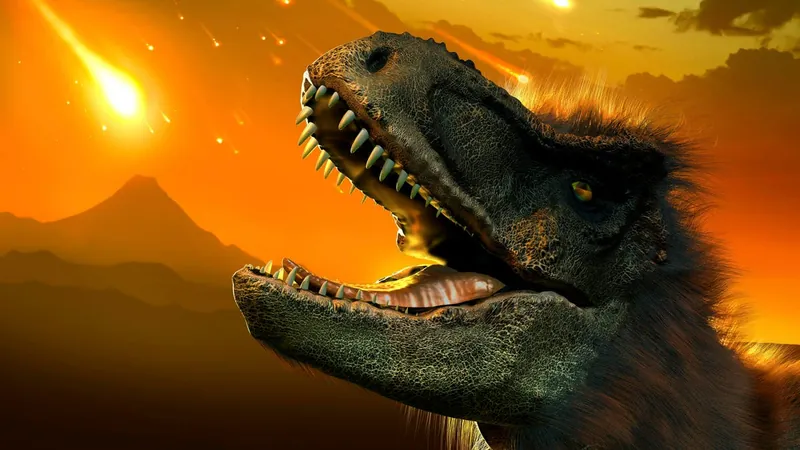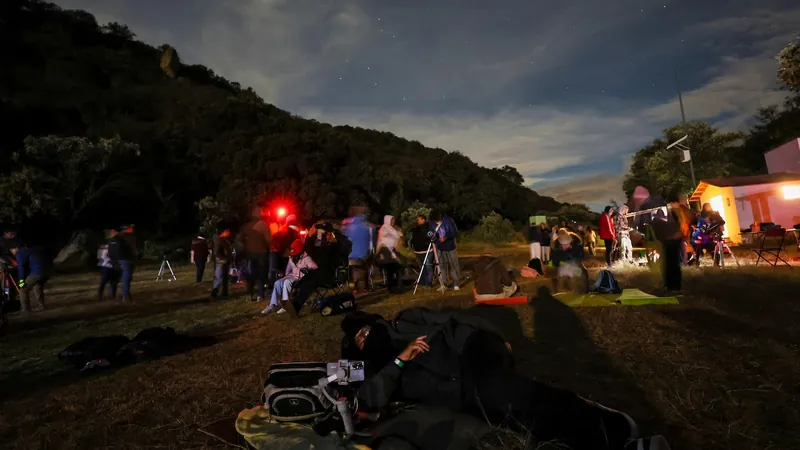
Shocking Discovery: Dinosaurs Faced Not One, But TWO Deadly Asteroids!
2024-11-02
Author: Wei
Around 66 million years ago, a cataclysmic event unfolded that ensured Earth would never see the likes of dinosaurs again—an enormous asteroid struck what is now known as Chicxulub in Mexico and spelled doom for the dinosaurs. However, recent research has revealed a jaw-dropping twist: a second asteroid collided with Earth during the same period, this time at the Nadir crater off the coast of Guinea in western Africa. This discovery suggests that nature had a double whammy in store for our prehistoric friends!
Groundbreaking Research
A groundbreaking study published in the prestigious journal Nature provides stunning insights into the Nadir crater. Spearheaded by Uisdean Nicholson, a geologist at Heriot-Watt University in Scotland, this research employed advanced 3D seismic data analysis to unravel the mysteries of the impact. Remarkably, the team was able to reconstruct details about the asteroid’s size, angle of entry, speed, and its effects on the ocean floor and geological layers beneath.
According to the study, the Nadir asteroid was estimated to be about 450 to 500 meters wide, traveling at a staggering 20 kilometers per second and striking Earth at an angle of 20 to 40 degrees from the northeast. As Nicholson noted, "There are around 20 confirmed marine craters worldwide, and none have been documented with this level of intricate detail. It’s a significant leap forward in our understanding."
The Concurrent Catastrophe
This study confirms that the Nadir impact occurred concurrently with the Chicxulub disaster, both events taking place around the end of the Cretaceous period. While the Chicxulub asteroid is widely recognized as the primary cause of the dinosaurs' extinction, the Nadir impact could have acted as a catastrophic accomplice.
The Astounding Aftermath of Dual Asteroid Impacts
The results of both asteroid impacts were nothing short of terrifying. The research demonstrates that the Nadir asteroid displaced all the water in the area, which was approximately 800 meters deep at the time, triggering a monumental chain of tsunamis across the Atlantic Ocean. These monumental waves ravaged coastal areas, adding to the destruction already wrought by the Chicxulub impact.
As the sediment rushed to fill the newly created crater, it formed a brim, with some material vaporized during the impact itself. The far-reaching effects of the tsunamis extended up to 20 kilometers away from the impact site, reshaping the ocean floor and its ecosystem.
Additionally, scientists predict that a massive earthquake would have ensued, causing significant upheaval beneath the seabed and even liquefying geological formations across the nearby region. The turbulence didn’t stop there; the relentless waves would eventually return, flooding the crater in a violent cycle.
But wait, there’s more—this one-two punch from nature could have also caused severe ionospheric disturbances and intense thermal radiation. The result? Catastrophic landslides as chunks of the seafloor plateau plunged into the depths of the ocean, compounding the already dire situation.
Conclusion
In conclusion, these startling revelations about the dual asteroid impacts shed new light on the catastrophic events that led to the age of dinosaurs coming to a dramatic end. One thing is clear: the earth-shaking news of this historical double threat will leave both scientists and history buffs alike in awe!


 Brasil (PT)
Brasil (PT)
 Canada (EN)
Canada (EN)
 Chile (ES)
Chile (ES)
 España (ES)
España (ES)
 France (FR)
France (FR)
 Hong Kong (EN)
Hong Kong (EN)
 Italia (IT)
Italia (IT)
 日本 (JA)
日本 (JA)
 Magyarország (HU)
Magyarország (HU)
 Norge (NO)
Norge (NO)
 Polska (PL)
Polska (PL)
 Schweiz (DE)
Schweiz (DE)
 Singapore (EN)
Singapore (EN)
 Sverige (SV)
Sverige (SV)
 Suomi (FI)
Suomi (FI)
 Türkiye (TR)
Türkiye (TR)